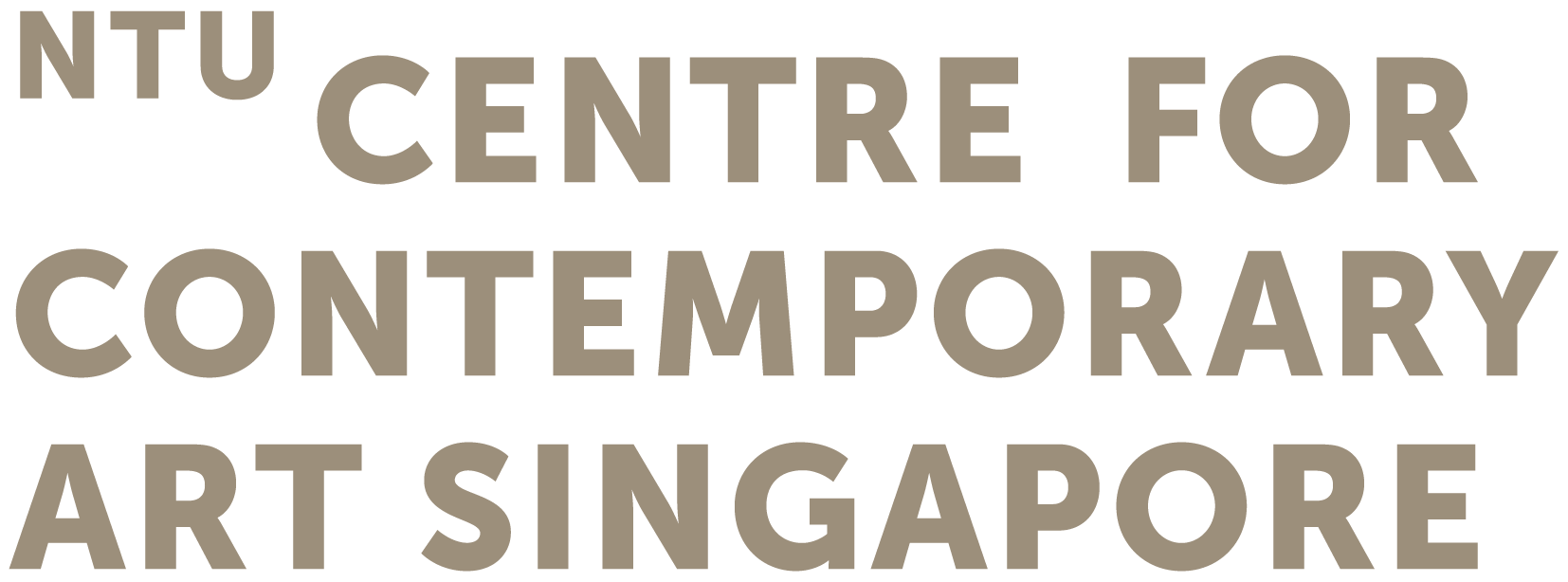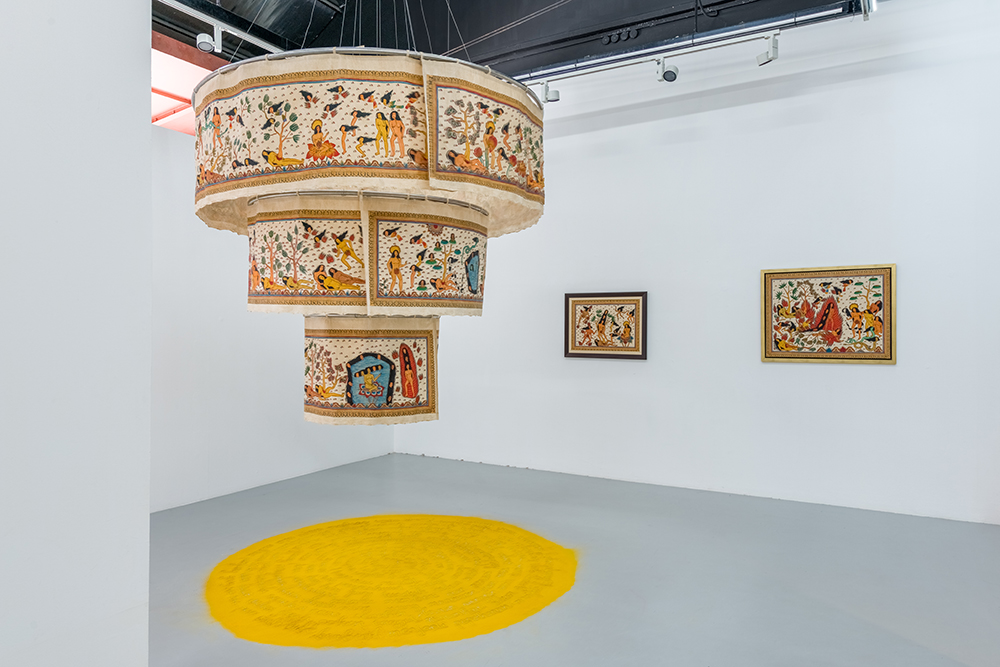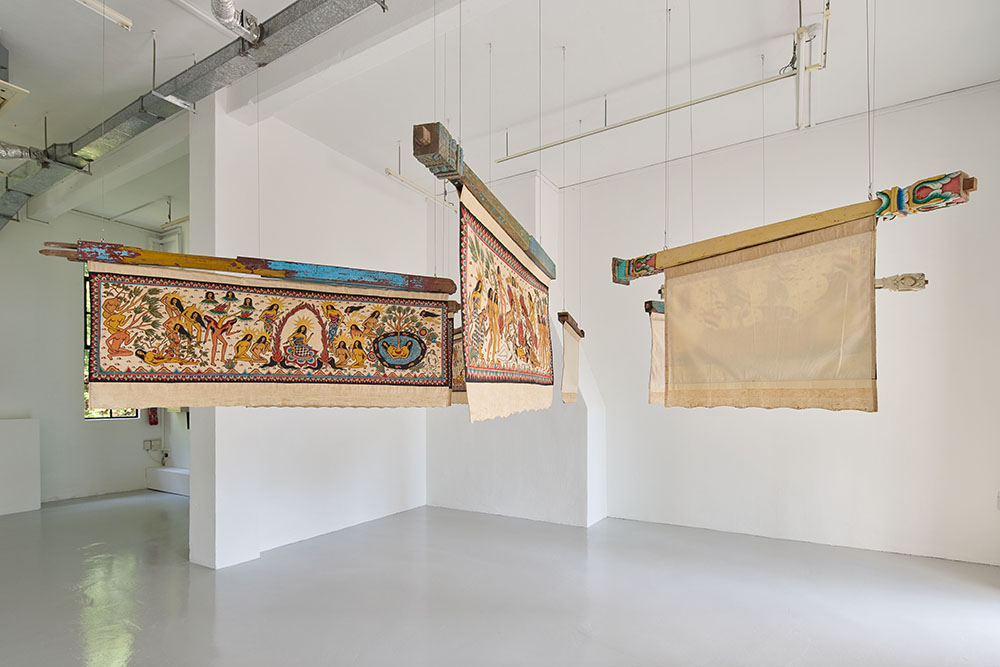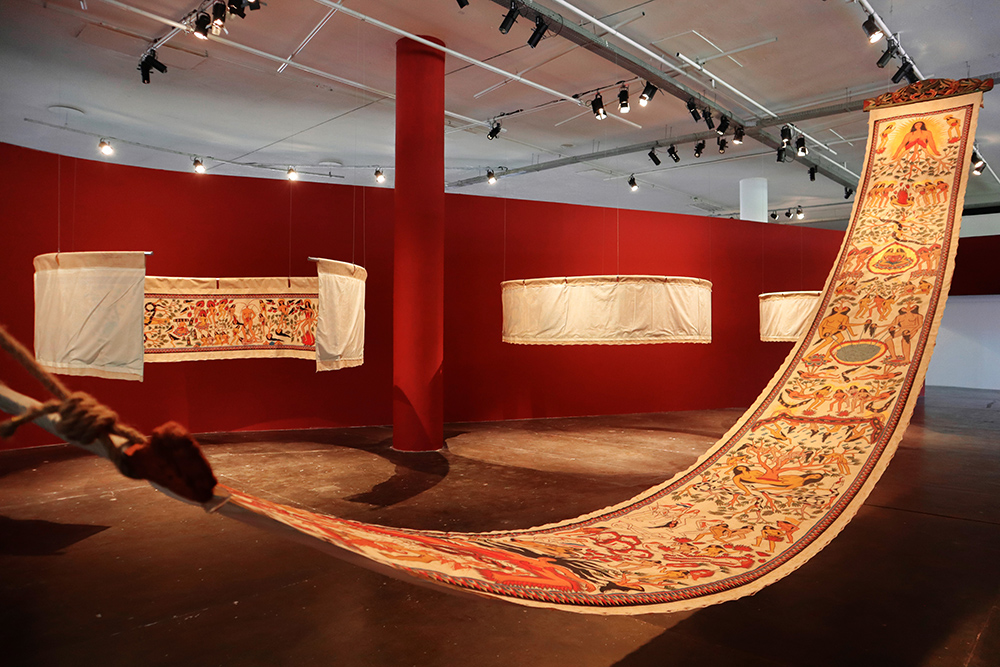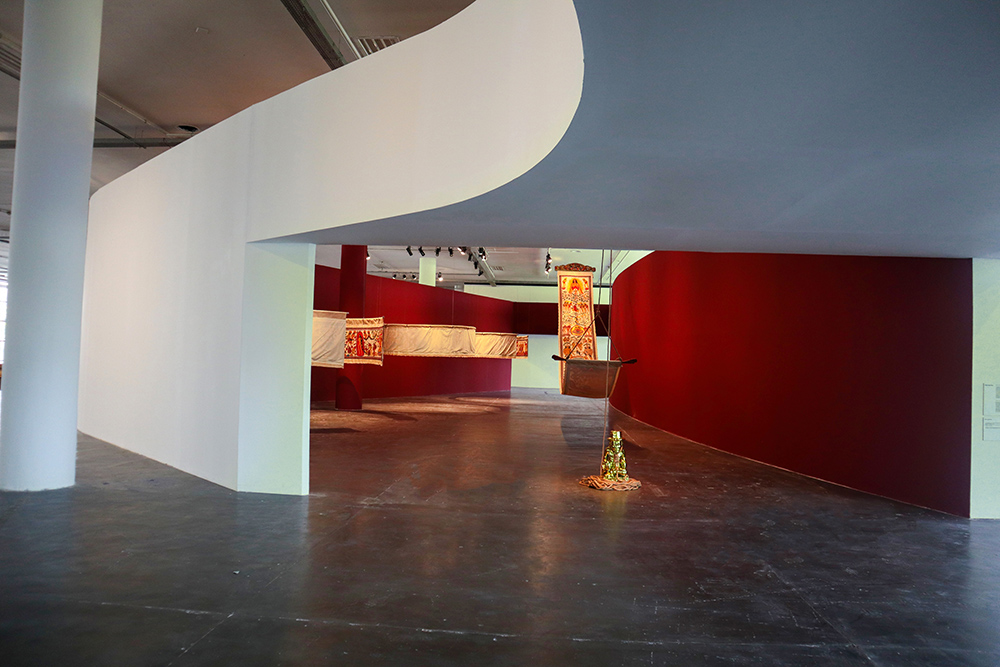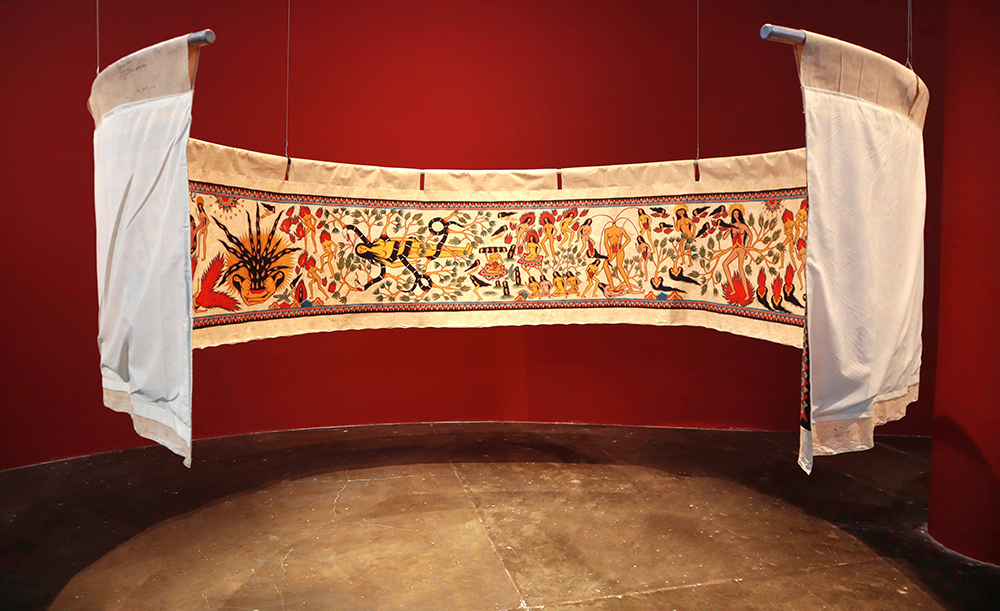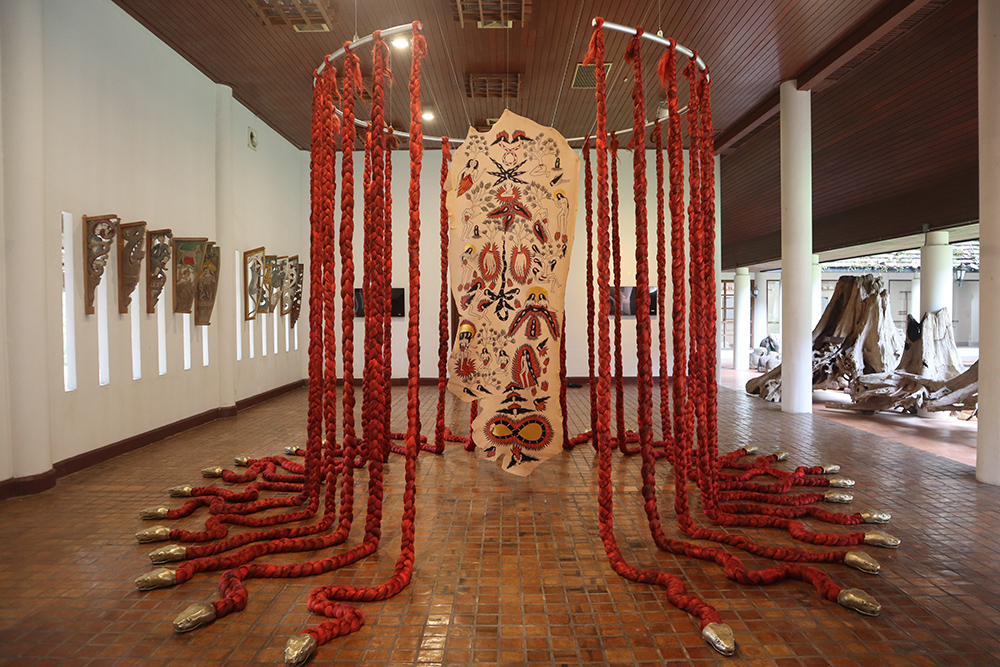
Citra Sasmita, Timur Merah Project IX: Beyond The Realm of Senses (Oracle and Demons). Courtesy the artist.
Projects
Timur Merah Project
In her essay, "Timur Merah Project: A Pilgrimage of Narrative, Memory, and Historical Legacy", Citra writes about her longstanding project, Timur Merah. The selected texts from her essay below explain the beginnings of her project, her initial research and the ways her art and methodology offers a counter-discourse to the colonially inheritance of Balinese cultural heritage. The artist writes:
"The Timur Merah Project is an embodiment of my resistance to a Balinese cultural heritage that is heavily influenced by colonialism and, now, globalization. The Balinese landscape is described and represented as exotic and noble, and continues to be the background for various writings and readings of history, art, and culture. This depiction is also used to glorify foreign painters and artists who live in Bali with great entitlement and privilege. Foreign painters, artists and scholars hold important positions in Balinese culture instead of Balinese artists and people. This is a form of exploitation that justifies itself by holding the Western world, its values and ideals as the standard. Indeed, counter-narratives to colonial inheritances and the neo-colonial gaze are urgently demanded. My art and research are an effort to make such contributions and demonstrate the possibilities of counter-discourses.[1]
In my initial research for the Timur Merah Project, there were limitations of access and comprehension in reading manuscripts written in Ancient Javanese and Balinese. Therefore, I gained an understanding of narrative in two ways. First, by conducting interviews with priests and elders who have inherited this knowledge. Second, through wayang narration [2]. Some wayang narratives can be interpreted through Kamasan painting, a painting style or genre developed in Klungkung, Bali, from the 15th century until now. However, Balinese culture practices the Wangsa or caste system, where only the Brahmins have access to reading lontar (palm leaf) texts and literary works in ancient languages. By contrast, the knowledge of Kamasan paintings is accessed more readily and in different way. Kamasan painters who live near the center of the Klungkung royal government are required to depict the pakem (cultural code)(4) of the wayang and its composition in the painting. Just as a puppeteer composes an image based on the storyline, these drawing experts of Klungkung have inherited and will pass on a practice of narrative as the ability to ‘read’ texts from generation to generation. Thus, even as these paintings relate to/invoke canonical texts, they influence a broader cultural understanding of what counts as ‘text’, and the aesthetics and experience of reading [3].
By interpreting these findings, I am aware that I take part in the broader discourse of narratives that we have inherited in Nusantara. As an artist, I make women central characters and protagonists in my paintings to challenge the fixed, single way of reading and interpreting narratives about women. I often transform masculine deities or mythological figures with supernatural powers, commonly found in old Kamasan paintings, to female figures.[4]"
[1] Sasmita, Citra. “Timur Merah Project: A Pilgrimage of Narrative, Memory, and Historical Legacy” The Jugaad Project, 3 September 2022, www.thejugaadproject.pub/timur-merah [Accessed 19/03/2024]
[2] Note: The wayang narrative, apart from developing into a shadow puppet show, is also part of oral tradition and illustration of Balinese traditional painting.
[3] Sasmita, Citra. “Timur Merah Project: A Pilgrimage of Narrative, Memory, and Historical Legacy” The Jugaad Project, 3 September 2022, www.thejugaadproject.pub/timur-merah [Accessed 19/03/2024]
[4] Sasmita, Citra. “Timur Merah Project: A Pilgrimage of Narrative, Memory, and Historical Legacy” The Jugaad Project, 3 September 2022, www.thejugaadproject.pub/timur-merah [Accessed 19/03/2024]
Read the rest of her insightful essay here
Biography

Citra Sasmita, (b. 1990, Indonesia) is an artist dedicated to unraveling myths surrounding Balinese art and culture while challenging conventional gender norms. Her work delves into the marginalized narrative of women in Balinese society, rejecting the passive portrayal often attributed to them. Drawing from traditional elements and myths, Sasmita imbues her female figures with powerful agency, reimagining their depiction against the backdrop of a patriarchal Indonesian society.
As a self-taught painter with a background in literature and physics, Sasmita's art reflects the complexity between the Anthropocene, post-humanism, and feminism. She repositions women within the historical canon, a crucial action in her Balinese environment. Rejecting the portrayal of Balinese women as decorative elements for tourists, Sasmita transforms classical narratives to symbolize female resistance. Her work, rooted in the vibrant Balinese traditional painting style of Kamasan, expresses avowedly feminist perspectives and aims to create secular mythologies for a post-patriarchal future.
Citra Sasmita's long-term Timur Merah Project was featured in the 'Garden of Six Seasons' exhibition in Hong Kong, showcasing her unique approach to Kamasan Balinese painterly language. Recognized with the Gold Award at the UOB Painting of The Year 2017, Sasmita's career highlights include participation in the Biennale Jogja XV (2019) and a solo exhibition, 'Ode To The Sun' (2020), at Yeo Workshop in Singapore. Her work is part of a pan-Asian effort to reinterpret traditional artistic languages for contemporary expression, contributing to a broader discourse on feminism and cultural identity.
Citra Sasmita. Image Courtesy the Artist and Gus Agung, Niskala Studio.
Selected Exhibitions
Selected Solo Exhibitions
2020 Ode To The Sun, Yeo Workshop-Gillman Barracks, Singapore
Selected Group Exhibitions
2023 Body, Community, and Society: She Is House, 333 Gallery, Bangkok
2022 Garden of Ten Seasons, Savvy Contemporary, Berlin, Germany
2022 Good News From Bali, Mizuma Gallery, Singapore
2021 A Life Beyond Boundaries, JWD Art Space, Bangkok
2021 Host, Edel Assanti, London
2020 ARTJOG Resilience, Jogja National Museum, Yogyakarta
2019 Synthesis (Wonders Of Indonesia), National Gallery Kvadrat 500 Bulgaria
Selected Residencies
2022 SEA Air - Studio Residencies for Southeast Asian Artist by NTU CCA Singapore in the EU, WIELS Centre d’Art Contemporain in Brussels
2019 Residensi Jogja Biennale di Kota Kinabalu, Sabah-Malaysia supported by Bekraf, Jogja Biennale, and Vallentine Willie
2018 Artist in residence, Red Base Foundation Yogyakarta
2017 Festival Bangsal Menggawe (Kolaborasi Seniman dan Masyarakat), Pemenang, Lombok. Utara supported by Komunitas Pasir Putih dan Koalisi Seni Indonesia
Selected Awards
2017 Gold Winner UOB Painting of the Year
